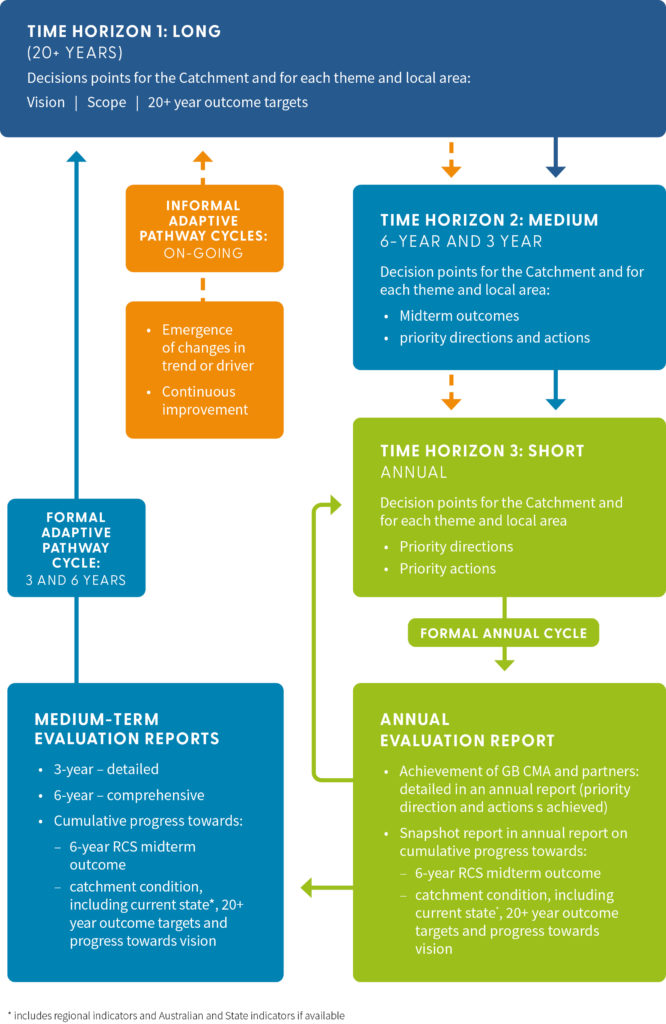Since the 1980s the Goulburn Broken community has adapted the management of natural resources by evaluating outcomes, factoring in emerging issues and trends and making improvements. The importance of establishing a learning culture that uses short and long-term indicators to inform improvements continues to grow.
The Goulburn Broken CMA is responsible for the evaluation, monitoring and reporting of this strategy. The CMA will collect supporting data and information from a range of partners to inform the evaluation and adaptation of the strategy. The evaluation plan includes flexibility for changing circumstances, consistent with a resilience approach. In addition, the evaluation monitors agreed tipping points informing the established, pathway and transforming priority actions.
This approach allows the CMA to contribute to statewide consistency in framing and describing monitoring, reporting and evaluation (as determined by the Victorian Catchment Management Council in 2019). A consistent outcome framework with indicators has been developed across Victorian CMAs, which you can download below.
Evaluation timeframes
There are 3 decision-making timeframes (long, medium and short) when developing, implementing and evaluating the strategy (Table 13 and Figure 16). The depth of evaluation varies for each, with the more comprehensive evaluation occurring every six years.
Table 13: Decision-making timeframe and evaluation depth and frequency
| Timeframe | Focus | Snapshot evaluation | Detailed evaluation | Comprehensive evaluation |
|---|---|---|---|---|
| Long (20+ years) | • Vision • Scope • Long-term outcomes | Goulburn Broken CMA Board workshop (annual) | N/A | Goulburn Broken Regional Catchment Strategy renewal (every 6 years) |
| Medium (6 years) | • Medium-term outcomes • Strategic directions • Priority actions | Goulburn Broken CMA Annual Report | Mid-term review of the Goulburn Broken Regional Catchment Strategy (every 3 years) | Goulburn Broken Regional Catchment Strategy renewal (every 6 years) |
| Short (annual) | • Strategic directions • Priority actions • Emergence of changes in drivers or trends. • Continuous improvement. | N/A | Goulburn Broken CMA Annual Report | Annual report to the Goulburn Broken CMA Board and Senior Management. |

Tracking progress
The data to track progress is guided by the strategy’s principle, supported by science, and collected according to agreed guidelines, indicators, timeframes and methodologies. Data is collected by the Goulburn Broken CMA, partners, and the community, and ultimately collated and reported in Goulburn Broken CMA Annual Reports and on this strategy website. Options for joint monitoring and reporting with other agencies, to share knowledge and drive change, will be investigated during implementation of the strategy.
The evaluation also contributes to tracking progress at a statewide level by including indicators that are monitored and reported across all catchment management regions. The statewide indicators are part of the consistent outcome framework.
Show your support
Pledge your support for the Goulburn Broken Regional Catchment Strategy and its implementation.



